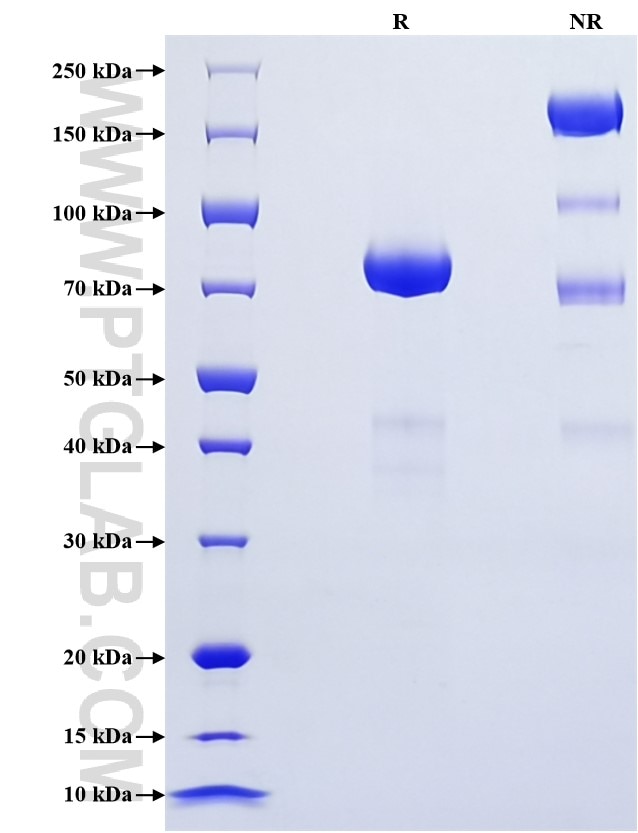Recombinant Human Neuroserpin protein (rFc Tag)
Species
Human
Purity
>90 %, SDS-PAGE
Tag
rFc Tag
Activity
not tested
Cat no : Eg2819
Validation Data Gallery
Product Information
| Purity | >90 %, SDS-PAGE |
| Endotoxin | <0.1 EU/μg protein, LAL method |
| Activity |
Not tested |
| Expression | HEK293-derived Human Neuroserpin protein Thr17-Leu410 (Accession# Q99574) with a rabbit IgG Fc tag at the C-terminus. |
| GeneID | 5274 |
| Accession | Q99574 |
| PredictedSize | 70.7 kDa |
| SDS-PAGE | 75-90 kDa, reducing (R) conditions |
| Formulation | Lyophilized from 0.22 μm filtered solution in PBS, pH 7.4. Normally 5% trehalose and 5% mannitol are added as protectants before lyophilization. |
| Reconstitution | Briefly centrifuge the tube before opening. Reconstitute at 0.1-0.5 mg/mL in sterile water. |
| Storage Conditions |
It is recommended that the protein be aliquoted for optimal storage. Avoid repeated freeze-thaw cycles.
|
| Shipping | The product is shipped at ambient temperature. Upon receipt, store it immediately at the recommended temperature. |
Background
Neuroserpin is a member of the serpin family of serine protease inhibitors predominantly expressed in the nervous system, such as s the cerebral cortex, hippocampus and the spinal cord.Neuroserpin exerts protective effects in neurons against excitotoxicity both in vitro and in vivo. Its proteolytic inhibitory activity is shown to protect neurons against damage caused by plasmin activation. Mice overexpressing neuroserpin exhibited loss of tPA activity in the brain. Overexpression of neuroserpin in primary neurons leads to increased dendritic arborization and altered dendritic spine shape.
References:
1. Yang X, Fang Z, et al. (2022) Seizure. 103:137-147. 2. Matsuda Y, Miura K, et al. (2016) Cancer Sci. 107(5):619-28. 3. Mirshahvaladi S, Chitranshi N, et al. (2024) Proteomes. 12(1):7. 4. Ranza E, Garcia-Tarodo S, et al. (2017) Am J Med Genet A. 173(9):2456-2460.
